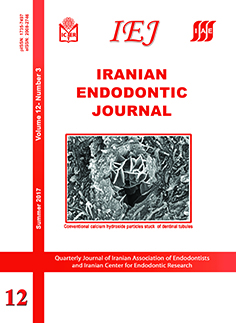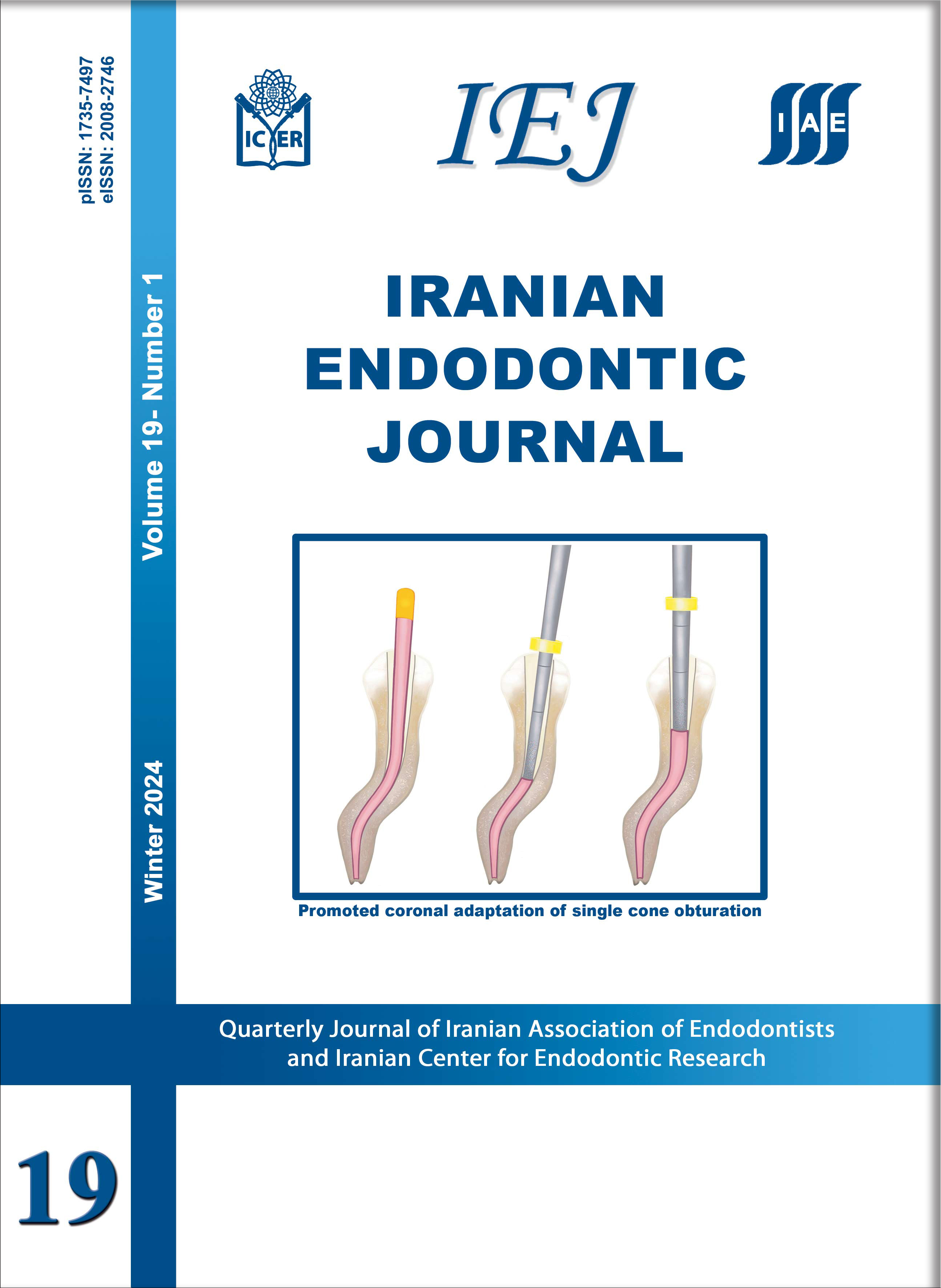An In vitro Comparison of Apically Extruded Debris Using Reciproc, ProTaper Universal, Neolix and Hyflex in Curved Canals
Iranian Endodontic Journal,
Vol. 12 No. 3 (2017),
2 July 2017
,
Page 307-311
https://doi.org/10.22037/iej.v12i3.13540
Abstract
Introduction: As a consequence of root canal preparation, dentinal chips, irrigants and pulp remnants are extruded into preradicular space. This phenomenon may lead to post endodontic flare-ups. The purpose of this study was to compare the amount of extruded debris with four endodontic NiTi engine-driven systems. Methods and Materials: Sixty mesiobuccal roots of maxillary molars with 15-30˚ curvature were divided randomly into four groups (n=15). Each group was instrumented up to apical size of 25 using Reciproc, ProTaper Universal, Neolix and Hyflex. Bidistilled water was used as irrigant and extruded debris was collected in pre-weighted Eppendorf tubes. Tubes were stored in incubator for drying the debris. Extruded debris were weighted in electronic microbalance with accuracy of 0.0001 g. The raw data was analyzed with one way analysis of variance (ANOVA) and Tukey’s HSD post hoc test. Level of significance was set at 0.05. Results: The debris extrusion with Reciproc files was significantly higher than the other groups (P<0.05). Hyflex significantly extruded less debris than other files (P<0.05). There was no significant difference between ProTaper Universal and Neolix regarding the amount of extruded debris (P=0.98). Conclusion: All systems extruded debris during the instrumentation. Reciproc system significantly extruded more debris. Caution should be taken when interpreting the results of this study and applying it to the real clinical situation.
Keywords: Controlled Memory; Debris Extrusion; Reciprocating; Root Canal Preparation; Rotary Instrumentation
How to Cite
- Abstract Viewed: 623 times
- PDF Downloaded: 674 times




